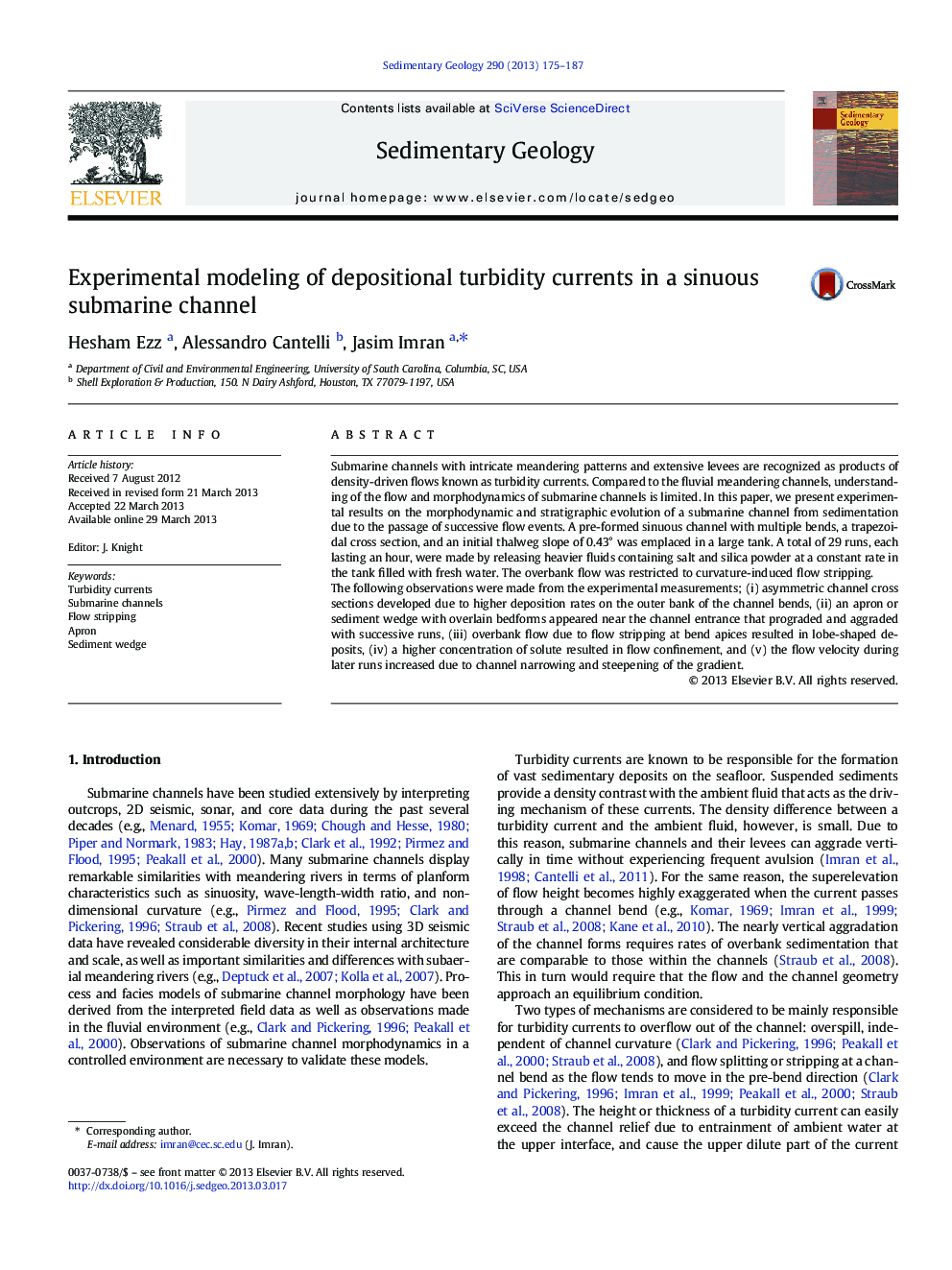| Article ID | Journal | Published Year | Pages | File Type |
|---|---|---|---|---|
| 4689555 | Sedimentary Geology | 2013 | 13 Pages |
•We present experimental results on depositional turbidity currents.•Asymmetric cross sections were observed at channel bend apices.•An apron or sediment wedge with overlain bedforms appeared near the channel entrance.•Over-bank flow due to flow stripping at bend apexes resulted in lobe-shaped deposits.•A higher concentration of solute resulted in flow confinement.
Submarine channels with intricate meandering patterns and extensive levees are recognized as products of density-driven flows known as turbidity currents. Compared to the fluvial meandering channels, understanding of the flow and morphodynamics of submarine channels is limited. In this paper, we present experimental results on the morphodynamic and stratigraphic evolution of a submarine channel from sedimentation due to the passage of successive flow events. A pre-formed sinuous channel with multiple bends, a trapezoidal cross section, and an initial thalweg slope of 0.43° was emplaced in a large tank. A total of 29 runs, each lasting an hour, were made by releasing heavier fluids containing salt and silica powder at a constant rate in the tank filled with fresh water. The overbank flow was restricted to curvature-induced flow stripping.The following observations were made from the experimental measurements; (i) asymmetric channel cross sections developed due to higher deposition rates on the outer bank of the channel bends, (ii) an apron or sediment wedge with overlain bedforms appeared near the channel entrance that prograded and aggraded with successive runs, (iii) overbank flow due to flow stripping at bend apices resulted in lobe-shaped deposits, (iv) a higher concentration of solute resulted in flow confinement, and (v) the flow velocity during later runs increased due to channel narrowing and steepening of the gradient.
